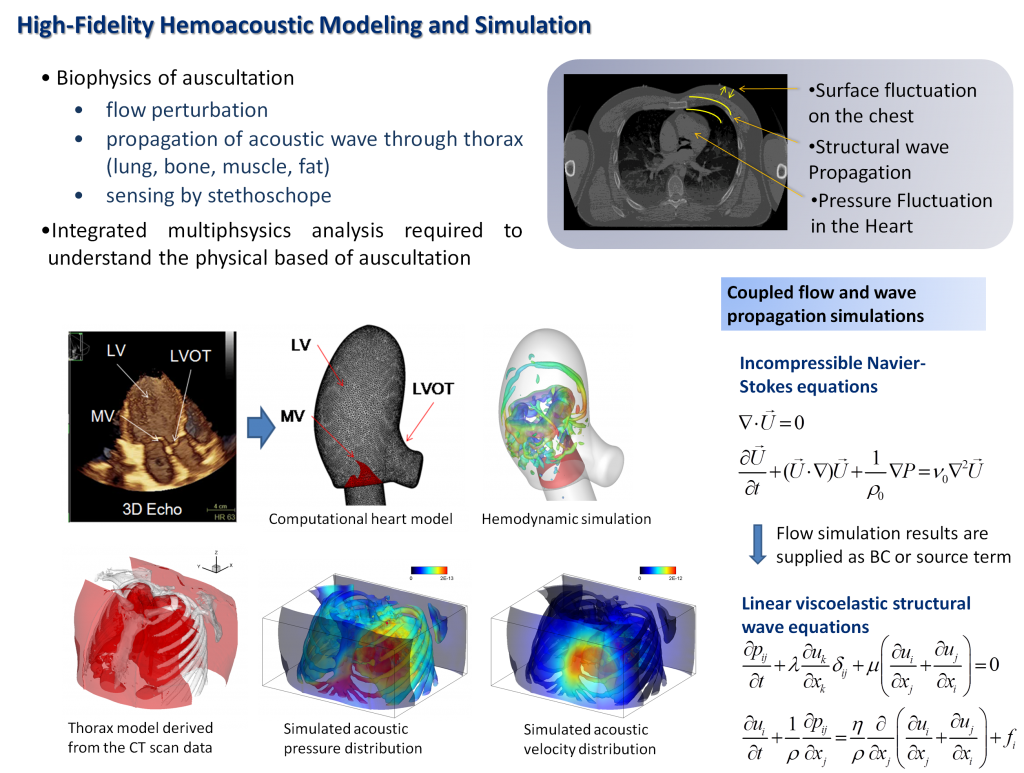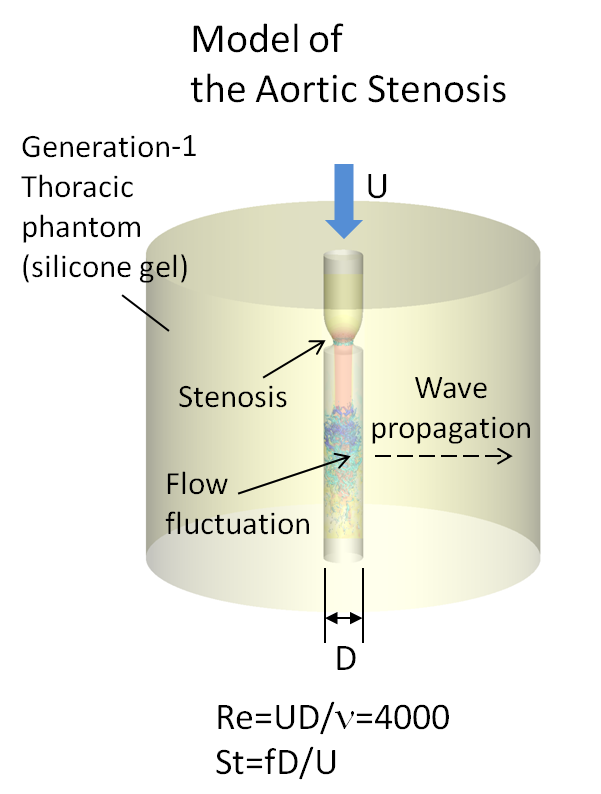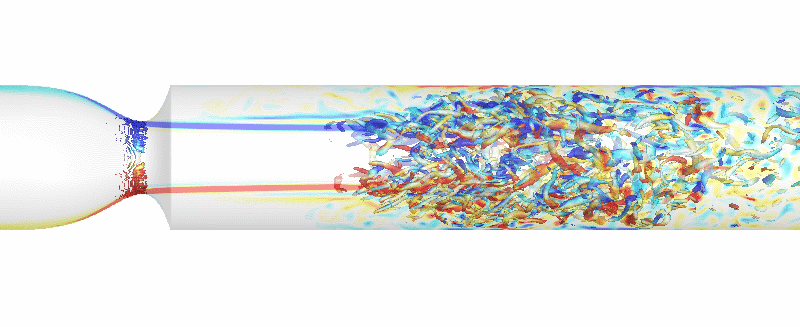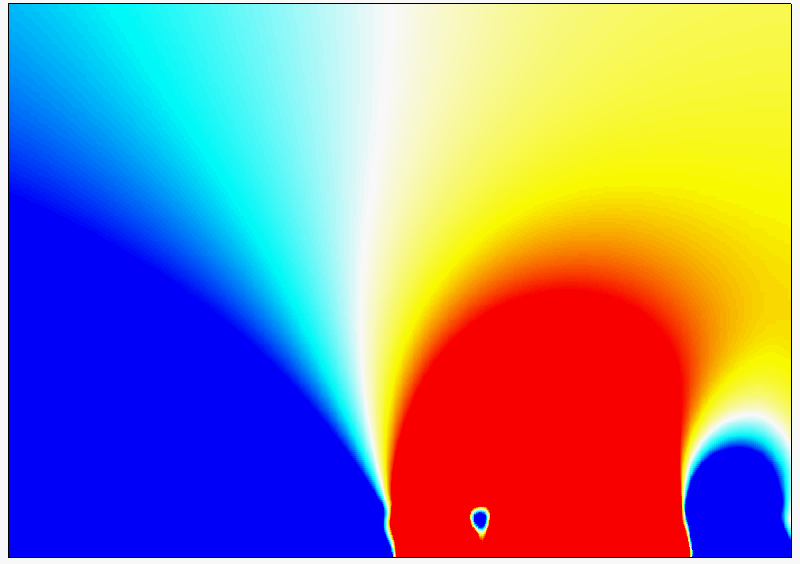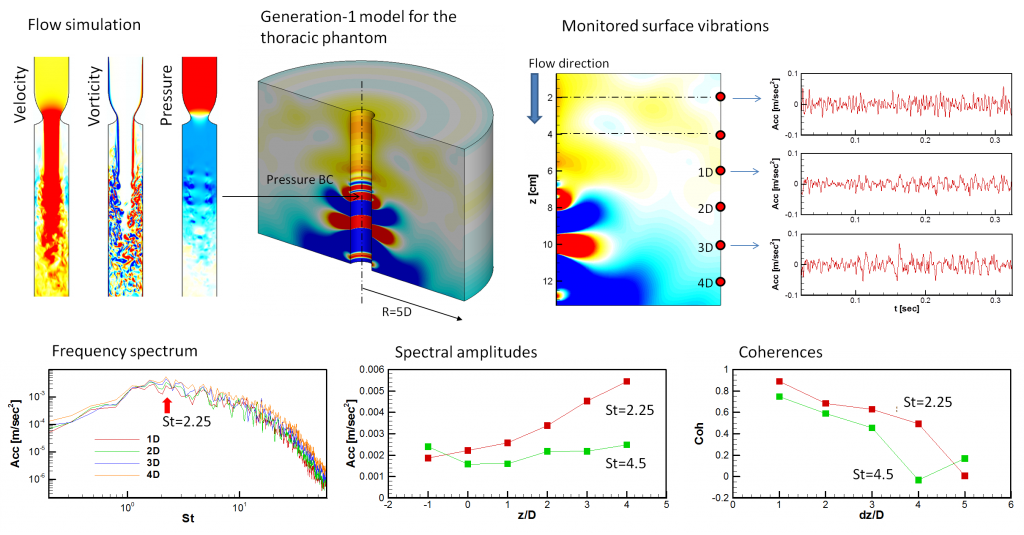Hemoacoustic Modeling and Simulation
Computational Hemoacoustics
Heart sound is resulted by the wave propagation that is generated by the hemodynamic flow perturbations in the heart. Thus in order to understand the physics of the cardiac auscultation, integrated multiphysics analysis is required. In the present study, we directly simulate the procedure of heart sound generation and propagation using the immersed boundary based, hybrid approach. The hemodynamic flow field in the heart is simulated by solving the incompressible Navier-Stokes equations using the sharp-interface immersed boundary method, while the wave generation and propagation is resolved by the linear viscoelastic structural wave equation. The hemodynamic results are then supplied for the boundary condition or source term for the wave equation. The structural wave equation is solved by the immersed boundary based high-order finite difference method (up to sixth-order) to minimize dispersion and dissipation error. We call this approach as a “Computational Hemoacoustics” and with which we can analyze the characteristics of heart sound generation and propagation.
Modeling of Aortic Stenosis Murmur
The aortic valve stenosis decreases the outflow area during the ejection which results high blood flow speed and associated flow instability. Such hemodynamic flow and pressure fluctuations generate the abnormal heart sound called “murmur” that can be used for the auscultation of the aortic valve stenosis. In order to investigate the characteristics and generation mechanism of the aortic stenosis murmur, we apply the computational hemoacoustic analysis for the simple model shown above. The aortic stenosis is modeled with a constriction in the tube, and the thorax surrounding the aorta is modeled by a cylindrical tissue materials.
The above animations show the vortical structure and axial velocity fluctuations. The jet-like flow caused by the constriction becomes unstable. This flow perturbation makes the pressure fluctuation on the wall that excites the surrounding tissue structure.
The above animations shows the radial velocity fluctuations in the tissue that represents structural wave generation and propagation. This results the vibration on the outer surface that makes the murmur sound when measured by the stethoscope.
The overall computational hemoacoustics procedure and data analysis are summarized above. The signal monitored on the outer surface clearly show the spatial pattern especially on the spectral magnitude and coherence (phase difference). Such spatial patterns can be used for the localization and pattern recognition of the auscultated sound.
